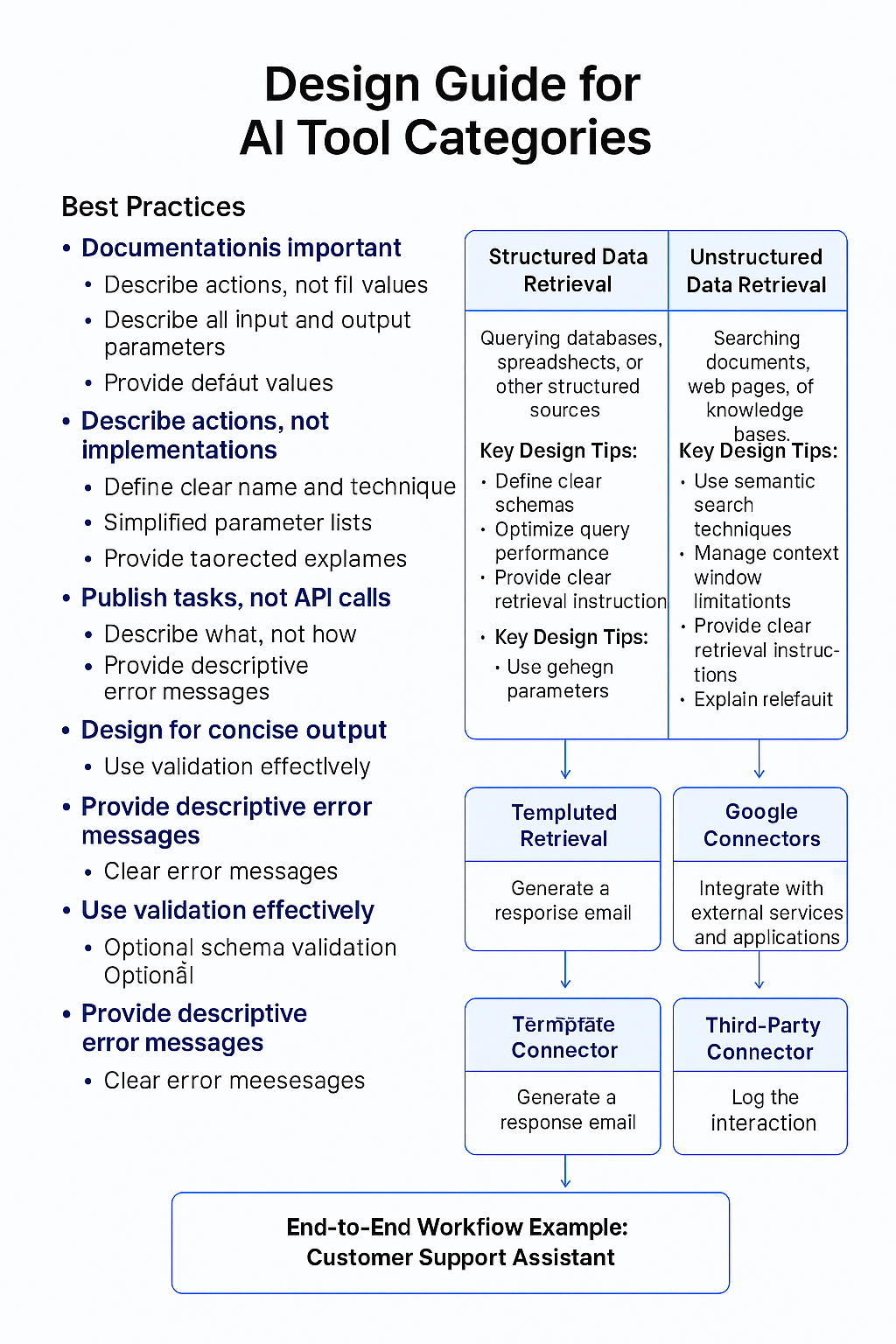(LSJ) Taxonomy of Agent Tools
/Taxonomy of Agent Tools
One way of categorizing agent tools is by their primary function, or the various types of interactions they facilitate. Here’s an overview of common types:
Information Retrieval: Allow agents to fetch data from various sources, such as web searches, databases, or unstructured documents.
Action / Execution: Allow agents to perform real-world operations: sending emails, posting messages, initiating code execution, or controlling physical devices.
System / API Integration: Allow agents to connect with existing software systems and APIs, integrate into enterprise workflows, or interact with third-party services.
Human-in-the-Loop: Facilitate collaboration with human users: ask for clarification, seek approval for critical actions, or hand off tasks for human judgment.
🔧 Design Guide for Tool Categories
1. Structured Data Retrieval
Use Case: Querying databases, spreadsheets, or structured sources (e.g., sales data in SQL, employee records in Excel).
Design Tips:
Define schemas clearly (e.g., customer_id, order_date, product_name).
Optimize queries for speed (indexes, joins).
Handle data types carefully (dates, decimals, text).
Workflow Example:
A retail company wants to analyze monthly sales. A structured retrieval tool queries the SQL database forSUM(sales)grouped by month, then feeds results into a dashboard.
2. Unstructured Data Retrieval
Use Case: Searching documents, web pages, or knowledge bases (e.g., customer support tickets, research papers).
Design Tips:
Use semantic search or embeddings for relevance.
Manage context window limits (chunking long documents).
Provide clear retrieval instructions (e.g., “return top 5 most relevant passages”).
Workflow Example:
A chatbot answers customer questions by retrieving relevant sections from a product manual using RAG (Retrieval-Augmented Generation).
3. Connecting to Built-in Templates
Use Case: Generating content from predefined templates (e.g., email drafts, reports, contracts).
Design Tips:
Ensure parameters are well-defined (e.g., recipient name, subject line).
Provide guidance on template selection (formal vs. casual tone).
Workflow Example:
HR uses a template connector to auto-generate offer letters. The system fills in candidate name, role, and salary into a predefined document template.
4. Google Connectors
Use Case: Interacting with Google Workspace apps (Gmail, Drive, Calendar).
Design Tips:
Leverage Google APIs with proper authentication.
Handle API rate limits gracefully.
Ensure authorization scopes are minimal and secure.
Workflow Example:
A project management assistant automatically schedules meetings in Google Calendar and sends invites via Gmail when a new task is assigned.
5. Third-Party Connectors
Use Case: Integrating with external services and applications (e.g., Slack, Salesforce, payment gateways).
Design Tips:
Document API specifications clearly.
Manage API keys securely (vaults, environment variables).
Implement error handling (retry logic, fallback).
Workflow Example:
A sales dashboard pulls live CRM data from Salesforce, enriches it with external market data, and pushes alerts to Slack when a deal progresses.
🔄 End-to-End Workflow Example
Imagine building a customer support assistant:
Structured Retrieval: Pull customer order history from SQL.
Unstructured Retrieval: Search knowledge base for troubleshooting guides.
Template Connector: Generate a response email using a predefined support template.
Google Connector: Attach relevant documents from Google Drive.
Third-Party Connector: Log the interaction in Salesforce for tracking.
This layered approach ensures the assistant is data-driven, context-aware, and seamlessly integrated into existing workflows.
👉 Workflow Diagram





